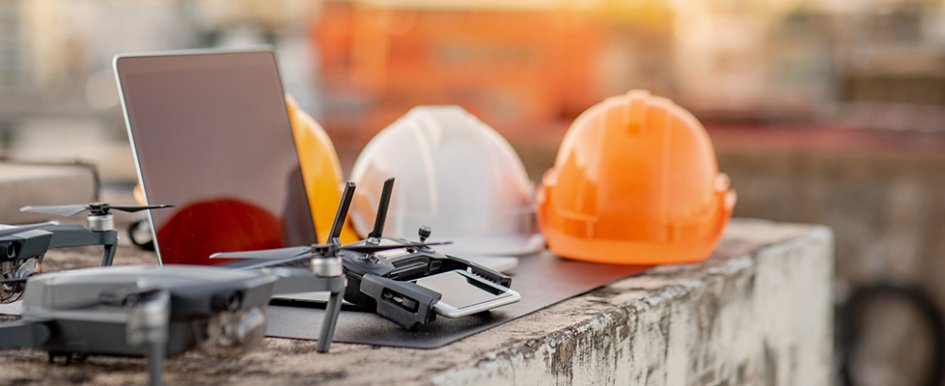
We’ve all heard and experienced the challenge of finding workers to fill construction-related jobs, whether in the office or the field. It’s a condition that isn’t likely to improve anytime soon. As a recent Forbes story pointed out, “help wanted” signs aren’t the solution.
Filling the labor gap is going to come down to technology, both as a way to attract a new generation of workers and to get work done safely and efficiently with a smaller staff. The 2024 Construction Hiring and Business Outlook from Associated General Contractors of America (AGC) found that 30% of firms will make an initial investment in artificial intelligence (19%) or increase their investment (11%). But what does that really mean to the construction industry?
Perhaps the first step to clarity is understanding that AI is not a single technology, or even a single algorithm. It’s a broad term for tools that use data to problem-solve and reason, and it can modify its decisions based on learned inputs — essentially mimicking human intelligence. AI presents a narrative around data.
Underneath AI are actual technologies such as computer vision, visual-based simultaneous localization and mapping (SLAM), 3D modeling tools, etc. AI inside software translates to doing more with less. Here are a few ways that AI can help — and, in some cases, might already be working behind the scenes to help reduce workforce-related issues.
Greater Insight & Faster Results
One of the top benefits of AI in construction is the chance to perform tedious manual tasks across a project life cycle.
Generative AI solutions are already available to help design teams automate modeling work such as creating 3D components from simple sketches — resulting in faster, less labor-intensive solutions. One recently released 3D-modeling tool now lets users create images from an active model through a text prompt.
During construction, there are tools that leverage AI-enabled computer vision and sensors to automatically update schedules and budgets, and catch potential safety issues based on field data collection that can help streamline processes, minimize rework and boost efficiency. With deep learning, AI software can automatically detect and label real-world assets from massive point-cloud datasets with tremendous accuracy and efficiency.
Basically, AI is used to mimic human cognitive functions with a goal of high-quality replacement, meaning that the result produced by AI-powered tools is expected to be as close as possible to the quality of human intelligence.
With AI intelligence, accounting teams can automatically turn paper and PDF invoices into invoice entries for faster, more accurate workflows that save contractors valuable time, effort and money. When applied to equipment sensor data, machine learning — a subset of AI that enables a system to learn and improve — can predict maintenance needs, reducing downtime and helping dispatch technicians more efficiently.
Bottom line: automated solutions maximize productivity and efficiency, making the most of a smaller workforce, minimizing the chance of risk and errors and identifying potential issues more quickly.
As AI systems take over more repetitive tasks, firms are able to do more with less while simultaneously taking on more and/or larger projects.
Accelerate Skill Adoption & Improve Safety
One of the fundamental challenges of the emerging construction workforce is lack of experience and expertise.
This is another area where AI can help. Trade workers are using AI-powered augmented reality systems to overlay design plans, specifications or instructional steps as a guide to tasks or to verify as-built conditions. There are already examples of steel detailers using AI to simplify the fabrication process. Further, an AI-enabled solution can evaluate that detailer’s design history to document best practices and shorten the decision-making process.
Leveraging AI and predictive modeling to not just track activities but recommend improvements for the future will be essential to getting the next generation worker up to speed very quickly.
Once on the job, cameras on construction equipment can leverage computer vision to detect people and alert operators to ensure safe work zones. These systems can also detect if workers are wearing proper safety equipment like hard hats and alert supervisors of any non-compliance issues in real time, thereby reducing safety risks. Another safety incentive: AI-assisted exoskeletons that help reduce physical strain and risk of injury for workers performing repetitive lifting tasks over long periods.
Realizing the Value
There are a lot of conversations and startup development around AI in the construction space, but it’s important to note that not all AI-enabled solutions are the same.
As an example, automatic model creation from a point cloud using AI sounds great theoretically, but it might be lacking the metadata behind it that is so critical to building information modeling (BIM) coordination, or the progress tracking.
If you, like many others, are considering ways to find the AI intersect with workforce shortages, start with small, targeted use cases where you can clearly demonstrate value to gain buy-in from leadership and workers. Automating a straightforward task is a good starting point. These pilot projects are also a good time to ensure you have robust data collection and management processes in place before implementing AI solutions to maximize their effectiveness.
Next, provide education and training opportunities for your workforce to learn about AI and how it can support their work, not replace them. Training sessions are a great time to address any fears or concerns.
And finally, continually reassess your AI implementations to refine processes based on lessons learned. AI can be a powerful tool for workforce upskilling and development — but, like any technology, it requires careful assessment, testing, flexibility and responsiveness to feedback from users. It’s why experts recommend having a technology partner that deeply understands the business of construction and can guide you on applying the right AI tools for your needs while handling backend integration.
